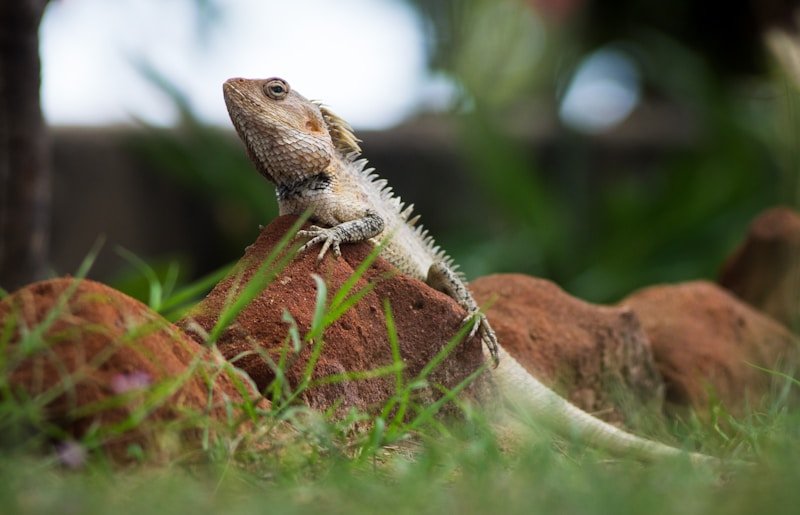Reptiles, often overshadowed by mammals and birds in the public consciousness, play a crucial role in maintaining the health and balance of ecosystems around the world. From controlling pest populations to contributing to the nutrient cycles of various habitats, reptiles are vital players in the complex web of life. This article takes a closer look at the ecological significance of reptiles, highlighting their diverse functions and the challenges they face in the modern world.
1. Reptiles as Pest Control Agents
One of the most significant ecological roles that reptiles perform is controlling the populations of pests. Many species of reptiles, especially snakes and lizards, feed on a variety of small animals, including rodents, insects, and other invertebrates. This natural pest control is essential in preventing the overpopulation of these creatures, which can otherwise lead to the depletion of crops and the spread of diseases.
For example, snakes are known to consume rodents that are capable of destroying crops or spreading disease. Lizards, on the other hand, are often insectivores, helping to regulate populations of pests like termites, ants, and beetles. By maintaining these populations in check, reptiles ensure that ecosystems stay balanced and that human agricultural endeavors are less vulnerable to the destruction of unwanted pests.
2. Reptiles as Prey for Other Species
Reptiles also serve as a critical food source for a wide range of predators in ecosystems. Birds of prey, mammals, and even other reptiles rely on smaller reptilian species to meet their dietary needs. This relationship is vital in maintaining a diverse food web, as it ensures that a wide range of animals can survive and thrive in their habitats.
In many ecosystems, the loss of reptiles would have a ripple effect throughout the food chain. Without reptiles, larger predators would lose a valuable food source, potentially leading to declines in their populations and the imbalance of the ecosystem. Thus, reptiles are not only important as predators but also as prey, helping sustain the biodiversity that ecosystems depend on.
3. Contribution to Nutrient Cycling
Reptiles play an important role in nutrient cycling, a process that is vital for maintaining soil fertility and promoting the growth of plants. Through their feeding behaviors and interactions with the environment, reptiles contribute to the breakdown of organic matter, helping to recycle nutrients back into the soil.
For instance, when reptiles consume small animals and plants, their digestive processes break down these materials, allowing nutrients like nitrogen, phosphorus, and potassium to be returned to the soil. Additionally, when reptiles shed their skin or die, their remains decompose and add organic matter to the soil, further enriching the ecosystem. In this way, reptiles are integral to the continued health of plant life, which in turn supports all other organisms within the food chain.
4. Reptiles as Indicators of Environmental Health
Reptiles are often considered bioindicators, meaning that their presence or absence can give scientists valuable insights into the overall health of an ecosystem. Many reptiles are particularly sensitive to changes in their environment, such as pollution, habitat destruction, and climate change. This sensitivity makes them ideal subjects for monitoring ecosystem health.
For example, amphibians like frogs and turtles are often among the first to show signs of environmental stress. Changes in their populations can indicate shifts in water quality, air pollution, or the degradation of habitats. Reptiles such as snakes and lizards are similarly vulnerable to habitat loss, which can lead to declines in their numbers and act as a warning signal that an ecosystem is under threat.
The Decline of Reptile Populations
Despite their importance, reptile populations are in decline worldwide. Habitat destruction, pollution, climate change, and illegal hunting are all contributing factors to this trend. As ecosystems are altered and disrupted, many reptile species find it increasingly difficult to survive. This decline threatens not only reptiles themselves but also the ecosystems that depend on their ecological roles.
Conservation efforts are urgently needed to protect reptile habitats, prevent over-exploitation, and mitigate the impacts of climate change. By safeguarding reptile populations, we can help maintain the balance of ecosystems and preserve the many services that reptiles provide. Efforts to raise awareness and promote sustainable practices in human activities are crucial in ensuring a future where reptiles continue to thrive and fulfill their ecological functions.
Conclusion
Reptiles are far more than just cold-blooded creatures that roam the Earth; they are essential to the health and stability of ecosystems. Whether they are controlling pest populations, providing a food source for predators, recycling nutrients, or serving as indicators of environmental change, reptiles contribute to the complex interactions that sustain life on Earth. As we face growing environmental challenges, it is vital that we recognize the importance of reptiles and take steps to protect them, ensuring that they continue to play their vital roles in our ecosystems for generations to come.

